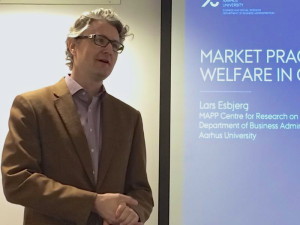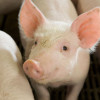Animal welfare is an important ethical issue in relation to modern food production and consumption and awareness of the negative consequence of current production practices is growing. Public outrage is instant and vociferous when pictures of maltreated animals are shown on TV. Inevitably, this results in calls for malpractices to stop and for changes to be made.
Politicians and authorities, who used to be in charge, increasingly look to ‘the market’ to drive improvements in animal welfare, as there seems to be a consensus that regulation alone cannot secure the desirable level of animal welfare. This market is usually taken for granted and assumed to work via anonymous market mechanisms such as Adam Smith’s famous invisible hand. However, in recent years there has been a realisation that markets do not simply exist, but are enacted on an ongoing basis through the concrete everyday activities of different actors.
Together with my colleagues Kathrine Nørgaard Hansen and Maja Pedersen, I have explored how the conditions for animal welfare are shaped by the practices of various actors in the pork industry and how these practices can reshape the market with a view to improving marketing activities and increasing sales of pork produced to better welfare standards than mandated by regulators. As viewers of Borgen will know, animal welfare can be a highly contentious issue in Denmark. The overall purpose of our project was to analyse if we can expect markets to play a role in promoting animal welfare in the Danish pork sector.
The Danish pork sector is interesting in this regard because it is very export-oriented (more than 90% of production is exported). Furthermore, the Danish pork sector is under pressure to keep costs down, as labour costs are higher in Denmark compared to competitors in order countries. There are therefore widespread concerns about the ability to recoup extra costs if animal welfare standards are improved unilaterally in Denmark.
Data was collected with actors along the entire value chain in Denmark and customers on five export markets (Australia, China/Hong Kong, Great Britain, Sweden and the US) and relevant export managers from Danish firms.
The study uncovered particularly interesting market practices:
- Practices differ significantly between countries, both in terms of the importance assigned to animal welfare and how animal welfare issues are enacted in day-do-day operations of various actors in the food chains. However, in all six countries, actors are trying to improve animal welfare. They sometimes have different ideals and goals and to some extent actors can therefore see each other as obstructing the good they are trying to accomplish.
- Although most actors agree that animal welfare can be improved, animal welfare improvements are highly contested. Different and to some extent conflicting considerations have to be reconciled in order to successfully improve animal welfare. How should pigs and sows be treated? This can be contentious in itself, but what is ideal from an animal welfare perspective is also up against economic considerations as primary producers, slaughterhouses, etc. are concerned about whether they will be able to recoup extra costs they will incur if they improve animal welfare or if they will we loose competitiveness on international markets.
- Marketing considerations need to be taken into account, can animal welfare be used to position and differentiate from competitors?
- Animal welfare is systemic – one actor cannot improve animal welfare in its own. It requires coordination and collaboration of numerous actors: farmers, slaughterhouses, meat processors, retailers, consumers, authorities, animal welfare organisations, third party auditors and more
By Lars Esbjerg

Lars is a MaRVL visiting scholar from the MAPP Centre for Research on Customer Relations in the Food Sector, Aarhus University, Denmark
Further readings on the animal welfare project can be found here, in Danish.
